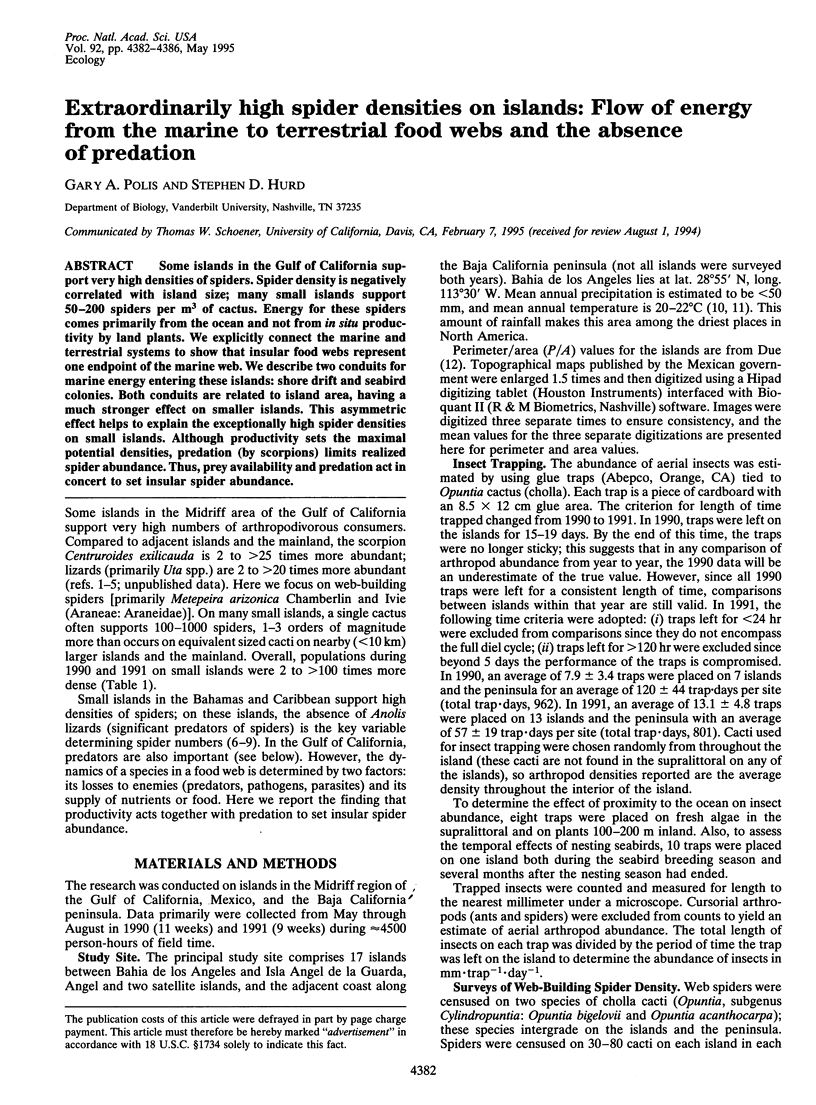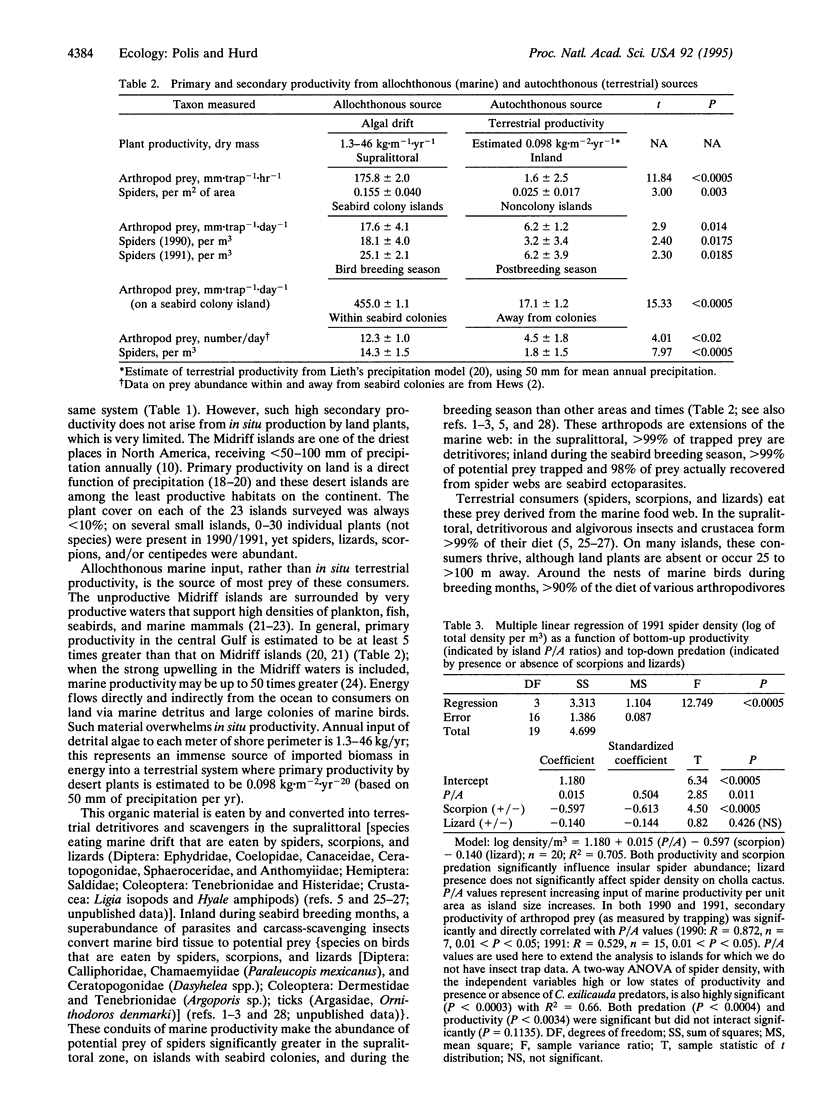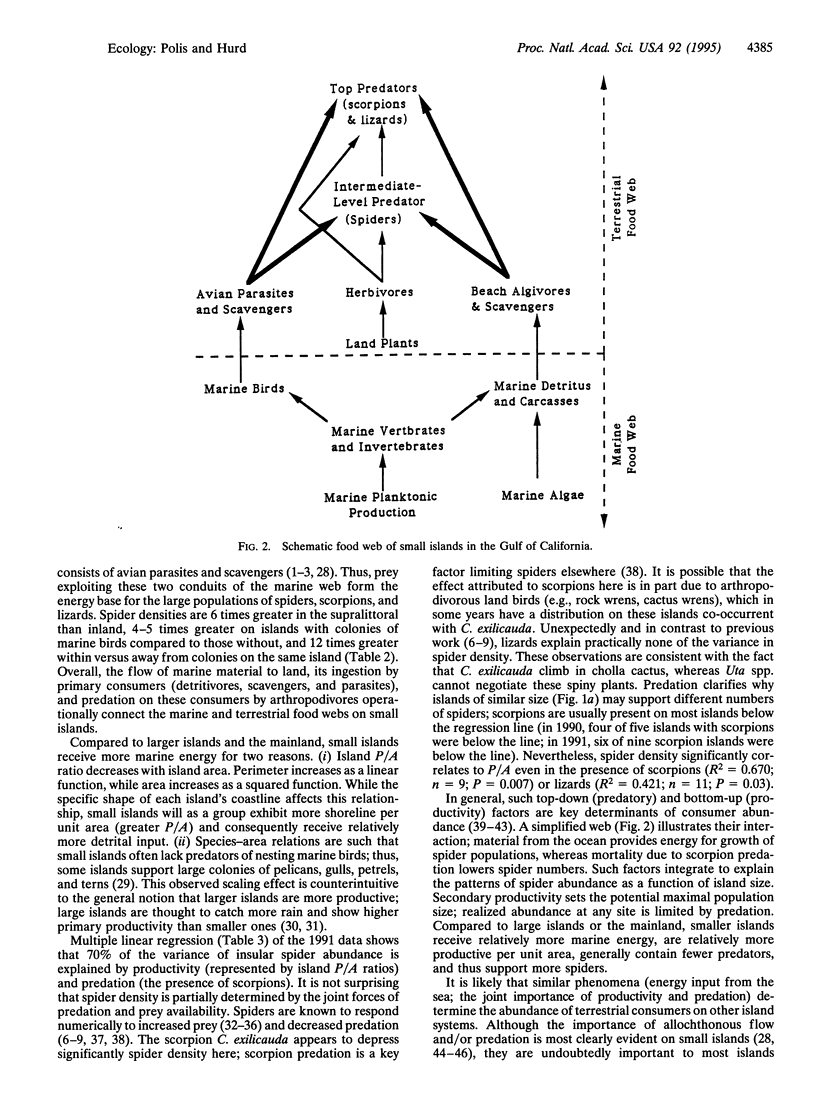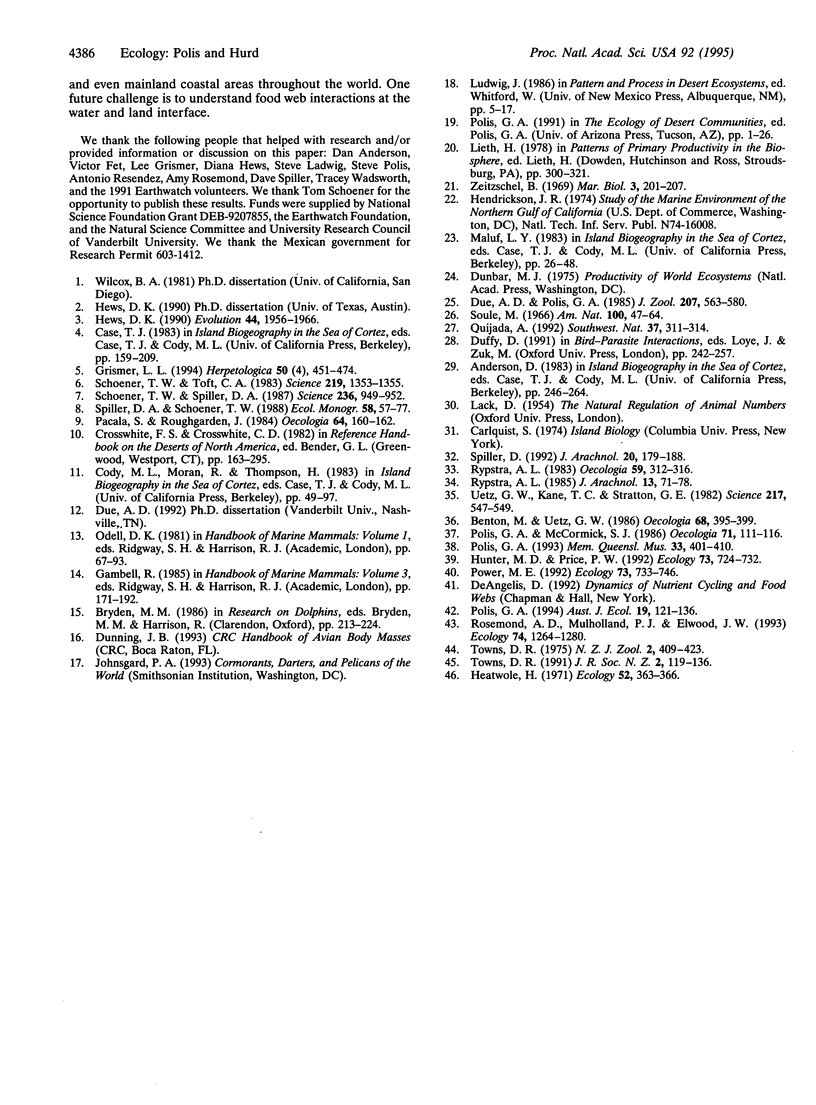Abstract
Some islands in the Gulf of California support very high densities of spiders. Spider density is negatively correlated with island size; many small islands support 50-200 spiders per m3 of cactus. Energy for these spiders comes primarily from the ocean and not from in situ productivity by land plants. We explicitly connect the marine and terrestrial systems to show that insular food webs represent one endpoint of the marine web. We describe two conduits for marine energy entering these islands: shore drift and seabird colonies. Both conduits are related to island area, having a much stronger effect on smaller islands. This asymmetric effect helps to explain the exceptionally high spider densities on small islands. Although productivity sets the maximal potential densities, predation (by scorpions) limits realized spider abundance. Thus, prey availability and predation act in concert to set insular spider abundance.
Full text
PDF




Selected References
These references are in PubMed. This may not be the complete list of references from this article.
- Schoener T. W., Spiller D. A. Effect of lizards on spider populations: manipulative reconstruction of a natural experiment. Science. 1987 May 22;236(4804):949–952. doi: 10.1126/science.236.4804.949. [DOI] [PubMed] [Google Scholar]
- Schoener T. W., Toft C. A. Spider populations: extraordinarily high densities on islands without top predators. Science. 1983 Mar 18;219(4590):1353–1355. doi: 10.1126/science.219.4590.1353. [DOI] [PubMed] [Google Scholar]
- Uetz G. W., Kane T. C., Stratton G. E. Variation in the social grouping tendency of a communal web-building spider. Science. 1982 Aug 6;217(4559):547–549. doi: 10.1126/science.217.4559.547. [DOI] [PubMed] [Google Scholar]


